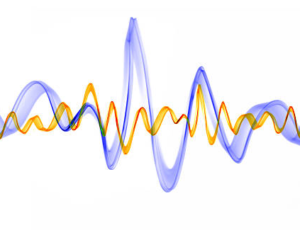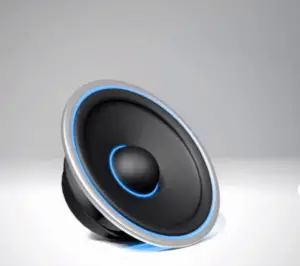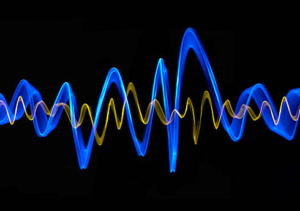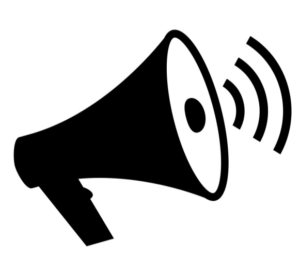In the realm of auditory sensations, there exists a sound that has the power to captivate our senses and transport us to a world of wonder. It’s a sound that seems to defy gravity, dancing through the air with a graceful elegance that leaves us spellbound. This auditory experience is none other than the swish sound. In the following pages, we will embark on a journey to explore the origins and it diverse applications.
A swish sound is a distinctive auditory sensation characterized by a smooth, continuous, and somewhat sibilant noise. It typically resembles the sound of something swiftly cutting through air or water. The swish sound can vary in intensity and duration depending on the source and the surrounding environment.
For instance, when a sharp blade slices through the air, it produces a sharp and quick swish sound that’s often associated with precision and speed. On the other hand, a longer, softer swish sound can be heard when an object glides smoothly through water, like the sound of a swimmer’s hand moving through a pool. This sound is often associated with fluidity and grace.
In everyday life, we encounter swish sounds in various contexts. From the rustling of leaves in the wind to the swishing of clothes in the dryer, these sounds add depth and texture to our auditory experiences. Swish sounds can evoke a sense of movement, elegance, or even anticipation, making them a valuable element in storytelling, music, and sound design.
Definition of Swish Sound
A swish sound is a hissing or rustling sound, often made by something moving quickly through the air. It is a type of onomatopoeia, meaning that the word sounds like its meaning.
Here are some examples of swishing sounds:
- The sound of a basketball net swishing as the ball goes through
- The sound of a sword swishing through the air
- The sound of a whip swishing
- The sound of a cat swishing its tail
- The sound of waves swishing against the shore
- The sound of leaves swishing in the wind
- The sound of a door swishing open
Swish sounds can also be used to describe the movement of something that is not actually moving through the air. For example, you might say that someone’s clothes are swishing as they walk, or that a politician is swishing through their speech.
Common Causes of Swish Sounds
Common causes of swish sounds include:
- Movement through the air: This is the most common cause of swish sounds. As mentioned above, the sound of a basketball net swishing, a sword swishing through the air, or a whip swishing are all examples of swish sounds caused by movement through the air.
- Blood flow: Swishing sounds can also be caused by blood flowing through blood vessels. This is particularly common in the ears, where a condition called pulsatile tinnitus can cause a whooshing or whooshing sound that is synchronized with the heartbeat.
- Respiratory disorders: Swishing sounds can also be caused by respiratory disorders, such as asthma or bronchitis. These disorders can cause the airways to narrow, which can create a whistling or whooshing sound as air passes through.
- Other medical conditions: Swish sounds can also be caused by a variety of other medical conditions, such as high blood pressure, anemia, and thyroid problems. If you are concerned about a swishing sound, it is important to see a doctor to rule out any underlying medical conditions.
Swish Sound in Sports
The swish sound is one of the most iconic sounds in sports. It is the sound of a perfectly executed shot, and it is a sound that can bring a crowd to its feet.
The swish sound is most commonly associated with basketball, where it is made when the ball goes through the net without hitting the rim. It is also heard in other sports, such as hockey, tennis, and golf.
In hockey, the swish sound is made when the puck goes into the net without hitting the post or crossbar. In tennis, the swish sound is made when the ball hits the strings of the racket and goes into the court without bouncing. In golf, the swish sound is made when the ball goes into the hole without hitting the lip.
The swish sound is a sound that is universally loved by sports fans. It is a sound that represents excitement, victory, and achievement.
Swish Sound in Water
The swish sound in water can be caused by a variety of things, including:
- Objects moving through the water: The sound of a fish swimming, a stone skipping, or a person swimming can all create a swishing sound in the water.
- Waves: Waves crashing against the shore or against rocks can also create a swishing sound.
- Water flowing: Water flowing through a pipe or faucet can also create a swishing sound.
- Air bubbles: Air bubbles rising through the water can also create a swishing sound.
The specific sound of the swish in water will vary depending on the cause. For example, the swish of a swimming fish will be different from the swish of a wave crashing against the shore.
The swish sound in water can be both calming and exciting. The sound of waves crashing against the shore can be a relaxing and meditative sound, while the sound of a fish swimming or a person swimming can be a more exciting and dynamic sound.
Swish Sound in Wind
The swish sound in wind can be caused by a variety of things, including:
- Objects moving through the wind: The sound of leaves rustling on trees, branches swaying in the wind, or a flag flapping in the wind can all create a swishing sound.
- Wind blowing through obstacles: Wind blowing through trees, buildings, or other obstacles can also create a swishing sound.
- Wind blowing over water: Wind blowing over the surface of a lake, river, or ocean can also create a swishing sound.
The specific sound of the swish in wind will vary depending on the cause. For example, the swish of leaves rustling on trees will be different from the swish of wind blowing through a building.
The swish sound in wind can be both calming and exciting. The sound of leaves rustling on trees or wind blowing through the grass can be a relaxing and meditative sound, while the sound of wind blowing through a forest or over a mountain can be a more exciting and dynamic sound.
Swish Sound in Music
The swish sound can be used in music in a variety of ways. It can be used to create a sense of movement, excitement, or danger. It can also be used to create a more atmospheric or cinematic sound.
Some common ways to use the swish sound in music include:
- Percussion: The swish sound can be created using a variety of percussion instruments, such as cymbals, hi-hats, and shakers. These instruments can be used to create a sense of rhythm and excitement in a song.
- Synths: The swish sound can also be created using synthesizers. This can be used to create a more atmospheric or cinematic sound. For example, a synth swish sound might be used in a science fiction movie soundtrack.
- Effects: The swish sound can also be created using sound effects pedals and other audio processing tools. This can be used to create a more unique and interesting sound. For example, a reverse swish sound might be used to create a sense of suspense or mystery.
Here are some examples of the swish sound in music:
- The swish sound of cymbals and hi-hats in a rock song.
- The swish sound of a synth in a science fiction movie soundtrack.
- The swish sound of a reverse cymbal in a horror movie soundtrack.
- The swish sound of a shaker in a Latin song.
- The swish sound of a whistle in a country song.
The swish sound is a versatile sound that can be used in a variety of ways in music. It is a sound that can add excitement, atmosphere, and interest to a song.
Swish Sound in Movies
The swish sound is a common sound effect used in movies. It can be used to create a sense of movement, excitement, or danger. It can also be used to emphasize a particular action or event.
Some common ways to use the swish sound in movies include:
- Transitions: The swish sound is often used to transition between scenes or shots. This can be used to create a sense of dynamism and excitement.
- Movement: The swish sound can also be used to create a sense of movement. For example, it might be used to emphasize the sound of a character running or flying.
- Action: The swish sound can also be used to emphasize a particular action or event. For example, it might be used to emphasize the sound of a sword being swung or a bullet being fired.
- Suspense: The swish sound can also be used to create suspense. For example, it might be used to emphasize the sound of a character sneaking up on someone or a car approaching at high speed.
Here are some examples of the swish sound in movies:
- The swish sound of a sword being swung in a samurai movie.
- The swish sound of a bullet being fired in a Western movie.
- The swish sound of a car approaching at high speed in a horror movie.
- The swish sound of a superhero flying through the air in a superhero movie.
- The swish sound of a spaceship traveling through space in a science fiction movie.
The swish sound is a versatile sound effect that can be used in a variety of ways in movies. It is a sound that can add excitement, dynamism, and suspense to a film.
How to Create a Swish Sound Effect
To create a swish sound effect, you can use a variety of methods, depending on the desired effect and the tools at your disposal.
One simple way to create a swish sound effect is to use a noise generator. Most digital audio workstations (DAWs) have a built-in noise generator, or you can use a dedicated noise generator plugin. Once you have generated a noise signal, you can use various effects to shape the sound.
A common way to shape a swish sound effect is to use a filter. A filter can be used to remove or boost certain frequencies, which can alter the overall character of the sound. For example, you can use a low-pass filter to remove the high frequencies, which will give the swish sound a more mellow tone.
Another important effect for shaping a swish sound effect is the envelope. The envelope controls the amplitude of the sound over time. You can use the envelope to create a smooth fade-in and fade-out, or to create a more abrupt attack and decay.
Finally, you can use various effects to add additional interest to your swish sound effect. For example, you can use a reverb to create a sense of space, or a delay to create a repeating echo.
Here is a basic step-by-step guide to creating a swish sound effect in a DAW:
- Create a new audio track and add a noise generator plugin.
- Use a filter to shape the sound of the noise.
- Use the envelope to create a smooth fade-in and fade-out.
- Add additional effects, such as reverb and delay, to taste.
- Export the audio as a WAV or MP3 file.
If you want to create more complex or realistic swish sound effects, you can use a variety of other techniques. For example, you can record the sound of real objects moving through the air, such as a sword swinging or a whip cracking. You can also use a synthesizer to create a custom swish sound effect.
Swish Sound in Nature
The swish sound is a common sound in nature, and it can be created by a variety of things, including:
- Wind: Wind can create a swish sound as it moves through the leaves of trees, the grass, or other objects.
- Water: Water can create a swish sound as it flows through a river or stream, or as waves crash on the shore.
- Animals: Some animals, such as birds and snakes, can create a swish sound as they move through the air.
Here are some specific examples of swish sounds in nature:
- The rustle of leaves in a forest on a windy day
- The sound of a wave crashing on the shore
- The sound of a bird flying overhead
- The sound of a snake slithering through the grass
- The sound of a waterfall
- The sound of a river flowing over rocks
Swish sounds can also be heard in a variety of other natural environments, such as deserts, mountains, and glaciers.
Moreover, swish sounds are often associated with movement and speed. They can be used to create a sense of excitement, danger, or mystery in nature. For example, the sound of a swishing wind might be used to create a sense of suspense in a movie scene, or the sound of a swishing waterfall might be used to create a sense of peace and tranquility in a meditation video.
Swish sounds can also be used to create a sense of place. For example, the sound of waves crashing on the shore might be used to create a sense of being at the beach, or the sound of wind rustling through the leaves might be used to create a sense of being in a forest.
Swish Sound in Martial Arts
The swish sound is also a common sound in martial arts. It is often made by martial artists when they punch, kick, or perform other techniques. This sound is known as a kiai, and it has a number of purposes.
One purpose of the kiai is to help the martial artist focus their energy and power. When a martial artist exhales forcefully with a kiai, it helps to tighten their core muscles and generate more power.
Another purpose of the kiai is to intimidate an opponent. A loud and powerful kiai can be startling and disorienting, and it can give the martial artist a psychological advantage.
Finally, the kiai can also be used as a way to communicate with other martial artists. For example, a martial artist might use a kiai to signal to their partner that they are ready to begin a technique, or to indicate that they have completed a technique successfully.
The kiai is an important part of many different martial arts disciplines, including karate, taekwondo, and judo. It is a sound that is both practical and symbolic, and it is one of the things that makes martial arts so unique and exciting.
Here are some specific examples of how the swish sound is used in martial arts:
- A karate student might use a kiai when they perform a punch or kick, to help them focus their energy and generate more power.
- A taekwondo student might use a kiai when they break a board with a kick, to intimidate their opponent and to demonstrate their strength and skill.
- A judo student might use a kiai when they throw their opponent, to signal to their partner that they are ready to begin the technique and to help them generate more power.
The swish sound is an essential part of many different martial arts disciplines, and it is a sound that is both practical and symbolic.
Swish Sound in Clothing
The swish sound in clothing is created by the friction between the fabric of the clothing and the air as the person moves. The swish sound can be more or less pronounced depending on the type of fabric, the fit of the clothing, and the person’s movements.
For example, a loose-fitting dress made of a lightweight fabric, such as silk, will create a more pronounced swish sound than a tight-fitting pair of jeans made of a heavy fabric, such as denim. Similarly, a person who is walking quickly will create a more pronounced swish sound than a person who is standing still.
The swish sound in clothing can be used to create a variety of different effects. For example, a designer might use the swish sound to create a sense of movement and fluidity in a garment. A filmmaker might use the swish sound to create a sense of excitement or suspense in a scene. And a musician might use the swish sound to create a rhythmic or percussive effect in a piece of music.
Swish Sound in Traffic
The swish sound in traffic is created by a combination of factors, including:
- The sound of tires moving on the road: Tires create a friction sound as they roll along the road. This sound is more pronounced on rough roads or when the tires are wet.
- The sound of air moving around the vehicle: As a vehicle moves through the air, it creates air resistance. This air resistance can create a variety of sounds, including a swishing sound.
- The Doppler effect: The Doppler effect is a change in the frequency of a sound wave due to the relative motion between the source and the observer. When a vehicle is approaching, its sound waves are compressed, which causes the frequency to increase. This results in a higher-pitched sound. As the vehicle passes by and moves away, its sound waves are stretched, which causes the frequency to decrease. This results in a lower-pitched sound.
The swish sound in traffic can be more or less pronounced depending on a number of factors, including:
- The type of vehicle: Some vehicles, such as sports cars and motorcycles, are designed to be aerodynamic and reduce drag. These vehicles are less likely to create a loud swishing sound. Other vehicles, such as trucks and buses, are less aerodynamic and create more drag. These vehicles are more likely to create a loud swishing sound.
- The speed of the vehicle: The faster a vehicle is moving, the louder the swishing sound will be.
- The road surface: Rough roads can create a louder swishing sound than smooth roads.
- The wind conditions: Wind can also affect the swishing sound in traffic. A strong wind can make the swishing sound louder and more pronounced.
The swish sound in traffic is a common and inevitable part of driving. However, there are a number of things that drivers can do to reduce the swishing sound, such as:
- Driving at a moderate speed: Driving at a moderate speed will help to reduce the amount of drag and noise created by the vehicle.
- Maintaining good tire pressure: Properly inflated tires will help to reduce friction and noise.
- Avoiding rough roads: If possible, try to avoid driving on rough roads.
- Rolling up the windows: Rolling up the windows will help to block out the swishing sound.
Swish Sound in Poetry
The swish sound is a common sound in nature, and it can also be used to create a variety of effects in poetry. Poets often use the swish sound to create a sense of movement, speed, or excitement. They may also use the swish sound to create a sense of suspense or mystery.
Here are some examples of how poets use the swish sound in their work:
- In his poem “The Road Not Taken,” Robert Frost uses the swish sound to create a sense of movement and possibility:
Two roads diverged in a yellow wood, And sorry I could not travel both And be one traveler, long I stood And looked down one as far as I could To where it bent in the undergrowth;
The word “swish” is not used in this poem, but the sound of the wind rustling through the leaves is implied. This sound creates a sense of movement and possibility, as the speaker stands at the crossroads and contemplates their choices.
- In her poem “I Sing the Body Electric,” Walt Whitman uses the swish sound to create a sense of power and vitality:
I sing the body electric, The appetites of the body electric, My muscles that ripple and flow, firmly bound to the bones within, The exquisite realization of health;
The word “ripple” in this poem creates a sense of movement and vitality. It also suggests the power of the body, as the muscles are “firmly bound to the bones within.”
- In his poem “The Raven,” Edgar Allan Poe uses the swish sound to create a sense of suspense and mystery:
Once upon a midnight dreary, while I pondered, weak and weary, Over many a quaint and curious volume of forgotten lore— When the nights were long and lonely, and the fire burned low, And my soul grew sick and sore—
The word “pondered” in this poem creates a sense of suspense and mystery. It suggests that the speaker is deep in thought, and that something important is about to happen.
These are just a few examples of how poets use the swish sound in their work. Poets can use the swish sound to create a variety of effects, depending on the desired mood or atmosphere of the poem.
Swish Sound in Space
There is no sound in space. Sound waves need a medium to travel through, and there is no medium in space. However, there are still many things in space that can create vibrations that could be interpreted as sound if there were a medium to travel through.
For example, the solar wind is a stream of charged particles that flows from the sun. As the solar wind interacts with planets and other objects in space, it can create vibrations that could be interpreted as sound if there were a medium to travel through.
Another example is the collision of asteroids and comets. When these objects collide, they can create a shock wave that could be interpreted as sound if there were a medium to travel through.
Even though there is no sound in space, scientists can still study the vibrations of objects in space using various instruments. For example, scientists can use seismometers to study the vibrations of planets and moons. They can also use magnetometers to study the vibrations of the solar wind.
By studying the vibrations of objects in space, scientists can learn more about the physical processes that are happening in space. For example, they can learn more about the solar wind, the formation of planets and moons, and the collision of asteroids and comets.
So, while there is no sound in space, there are still many things in space that can create vibrations. Scientists can study these vibrations to learn more about the physical processes that are happening in space.
Swish Sound in Speech Therapy
The swish sound is a speech sound that is made by placing the tongue behind the upper front teeth and blowing air out. It is one of the most difficult sounds for children to learn to produce. The swish sound is often used in speech therapy to help children learn to produce other speech sounds, such as the /s/ and /z/ sounds.
There are a number of different ways to use the swish sound in speech therapy. One common method is to use a visual cue, such as a mirror or a picture of the tongue in the correct position. The therapist can also use a tactile cue, such as gently touching the child’s tongue with their finger, to help the child produce the sound correctly.
Once the child is able to produce the swish sound in isolation, the therapist can start to work on blending it with other sounds to form words. For example, the therapist might start by having the child say the syllables /sa/, /si/, and /su/. Once the child is able to say these syllables correctly, the therapist can start to have the child say words that contain the swish sound, such as “snake” and “skate.”
There are a number of different activities that can be used to help children learn to produce the swish sound in speech therapy. Here are a few examples:
- Blowing bubbles: Blowing bubbles is a fun and effective way to help children learn to produce the swish sound. The child simply needs to blow air through a straw to create a bubble.
- Making a snake sound: The child can make a snake sound by placing their tongue behind their upper front teeth and blowing air out.
- Making a wind sound: The child can make a wind sound by placing their tongue behind their upper front teeth and blowing air out while saying the word “whoosh.”
- Singing songs: There are a number of songs that contain the swish sound. Singing these songs can help children learn to produce the sound correctly in a fun and engaging way.
If you are concerned about your child’s speech development, it is important to talk to a speech-language pathologist (SLP).
Conclusion
The swish sound, subtle yet resonant, serves as a poignant reminder of the dynamic nature of our world. Whether it’s the gentle whisper of leaves rustling in the wind, the soothing lull of ocean waves, or the crisp crunch of fresh snow underfoot, these auditory sensations connect us to the beauty and serenity of the natural world.
Beyond its aesthetic appeal, the swish sound embodies the ebb and flow of life, encapsulating moments of calm and movement in a symphony of sound. It reminds us to pause, appreciate the simple pleasures around us, and find solace in the everyday symphonies of existence.








